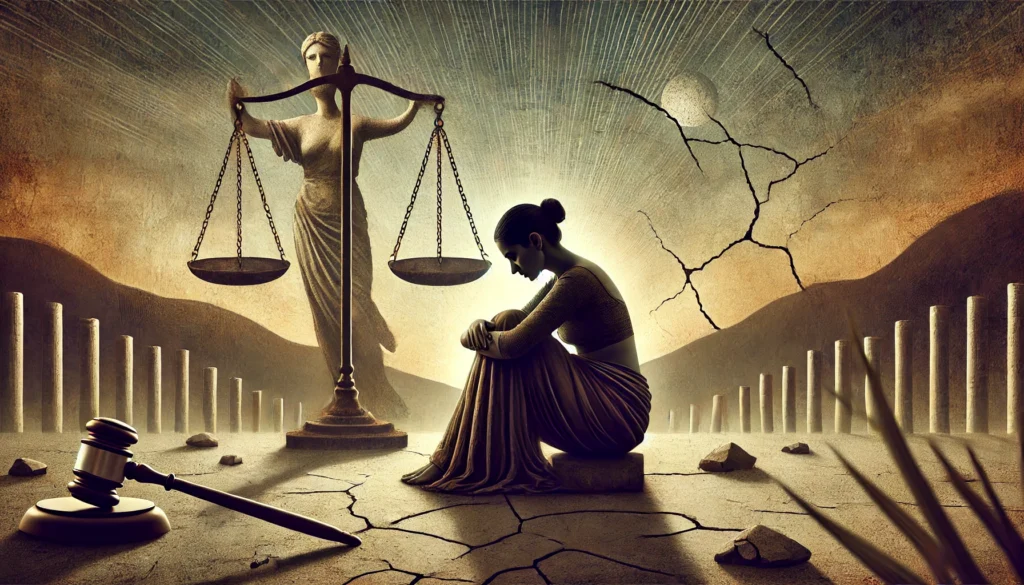Published on 11th July 2025
Authored By: Vaida Jaasmita
Vellore Institute of Technology, Chennai
Abstract
India’s legal system is unique in that it combines constitutional ideas of equality and secularism with a sophisticated interaction of personal rules grounded on religious traditions. This paper explores the development of marriage and divorce laws under several personal law regimes—Hindu, Muslim, Christian, and Parsi—and examines the court’s function in making sure these laws complement constitutional requirements. The paper examines important Supreme Court decisions to show the challenges and advancement achieved in bringing personal laws into line with the values ingrained in the Indian Constitution.
Introduction
The complex network of personal laws that comprise India’s legal system reflects the cultures and religious beliefs of its diverse populations. These laws govern private areas of life, such as marriage and divorce, and they have their origins in religious traditions. However, they often conflict with the secular and egalitarian principles enshrined in the Indian Constitution.[1] The Constitution upholds equality before the law, prohibits discrimination, and safeguards religious freedom. Due to the coexistence of these constitutional requirements and personal laws, complex legal issues have arisen, including violations of individual rights, particularly for women.
The judiciary has played a crucial role in settling these conflicts. Famous decisions like Sarla Mudgal v. Union of India and Mohd. Ahmed Khan v. Shah Bano Begum[2] show the court’s commitment to upholding constitutional values even when they conflict with private laws.[3] The ongoing debate surrounding the Uniform Civil Code (UCC) serves to further emphasize the tension between individual laws and the goal of legal uniformity.[4] Although its implementation is still debatable, the UCC aims to create a uniform set of regulations governing everyone’s personal affairs in order to strike a balance between religious diversity and the objectives of equality and national unity.
Evolution of Personal Laws in India
The evolution of India’s personal laws has been complicated by colonial interventions, religious beliefs, and post-independence legislative reforms. This evolution can be divided into three general eras: the colonial era, the post-independence developments, and the ancient and medieval periods.
- Ancient and Medieval Period:
- Hindu Personal Law – Hindu personal rules were intricately entwined with religious literature and rituals in ancient India. The ‘Shruti’ (Vedas) and ‘Smriti’ (especially Manu smriti)[5] were the main sources of Hindu law and established rules for marriage, inheritance, and family relationships, among other areas of life. These writings frequently reinforced patriarchal norms by emphasizing obligations and responsibilities within family institutions. Personal laws were also significantly shaped by local conventions and traditions, with regional and community-specific variances noted.
- Islamic Personal Law – When Islamic rule started in India, Muslim personal laws were put into place. These were primarily based on the Quran, Hadith, Ijma (consensus), and Qiyas (analogical reasoning)[6]. Inheritance, maintenance, divorce (talaq), and marriage (nikah) were all governed by these regulations. Only Muslims were usually subject to Islamic personal law, and the government regularly allowed religious organizations to manage their own internal affairs.
- Other Religious Communities –When it came to private matters, the Christian, Parsi, and Jewish communities in India all followed their own religious doctrines and customs. The idea that people should be free to live their own lives in accordance with their religious beliefs with minimal government interference was shared by all religions, despite the fact that each of these societies had its own customs.[7]
- Colonial Period:
The British colonial government significantly altered India’s legal system, which had a range of implications for personal laws.
The Charter of 1726 marked the beginning of official English legal authority in India by establishing Mayor’s Courts in Bombay, Calcutta, and Madras.[8] Even though British citizens were subject to English law, the colonial government allowed native tribes to be governed by their own laws pertaining to marriage, inheritance, and religion.
Initiatives for Codification, the British tried to codify their laws to ensure uniformity and administrative ease. They did, however, respect religious convictions and generally refrain from interfering with private laws. Two noteworthy exceptions that attempted to address societal issues within personal law systems are the Hindu Widow Remarriage Act of 1856[9] and the Child Marriage Restriction Act of 1929[10].
The Special Marriage Act of 1872[11] provided a civil marriage option for anyone wishing to wed outside of their religious customs. Initially limited, it was later expanded to allow interfaith marriages without requiring individuals to abandon their faith.
- Post Independence Era:
India started the process of changing its personal laws to conform to the equality and secularism tenets of the constitution after attaining independence in 1947.
- Bills for the Hindu Code – The Hindu Code Bills were a set of legislation passed by the Indian Parliament between 1955 and 1956[12]. These laws included:
- The Hindu Minority and Guardianship Act of 1956 established guidelines for minors’ guardianship[15].
- The 1956 Hindu Adoptions and Maintenance Act established uniform regulations for adoption and maintenance duties[16].
These changes sought to advance gender equality and modernize Hindu personal laws.
- Muslim Personal Law – The Muslim Personal Law (Shariat) Application Act of 1937 controlled Muslim personal laws, which were mainly uncodified after independence[17]. A Muslim woman is entitled to maintenance under Section 125 of the Criminal Procedure Code, the Supreme Court ruled in Mohd. Ahmed Khan v. Shah Bano Begum[18], highlighting the fact that personal laws cannot supersede constitutional provisions guaranteeing justice and equality. However, other aspects, like maintenance rights, came under judicial scrutiny, resulting in historic rulings.
- Christian and Parsi Personal Laws – The Indian Christian Marriage Act of 1872[19] and the Parsi Marriage and Divorce Act of 1936[20], respectively, continued to regulate the private affairs of Christians and Parsis. Over time, these laws were changed to address concerns about gender equality and to comply with constitutional requirements.
- The Uniform Civil Code, or UCC – Article 44 of the Indian Constitution calls for the adoption of a Uniform Civil Code, which would replace the various laws based on religious texts and practices with a single set that governs all citizens. Even though the UCC is still debatable, some regions, such as Goa, have passed a common civil code that is applicable to all communities[21].
Judicial Precedents
The Indian court has played a crucial role in interpreting and changing personal laws to bring them into line with the constitutional requirements of justice, equality, and secularism. Through landmark decisions, courts have settled disputes between fundamental rights and religious principles, regularly setting precedents that have altered the legal system.
- Ahmed Khan v. Shah Bano Begum (1985)
The Supreme Court considered the question of maintenance rights for Muslim women who have divorced in this landmark case. According to Islamic law, Shah Bano, a 62-year-old Muslim lady, was refused maintenance when her husband divorced her. The Court decided in her favor, citing Section 125 of the Criminal Procedure Code, which requires maintenance for women who are unable to support themselves. The ruling made clear that secular rules guaranteeing justice and equality cannot be superseded by personal legislation. The Muslim Women (Protection of Rights on Divorce) Act, 1986, which attempted to weaken the Court’s decision, was passed as a result of the national discussions this decision generated. Other decisions, like Danial Latifi v. Union of India, upheld the fundamentals of the Shah Bano ruling and reinforced the notion that personal laws must follow constitutional guidelines.[22]
- Sarla Mudgal v. Union of India (1995)
This lawsuit focused on bigamy and the misuse of personal laws. The petitioners were Hindu women who contested the legality of their husbands’ second marriages after they converted to Islam, without terminating their first Hindu marriage. Because these conversions sought to circumvent the Hindu Marriage Act’s requirement of monogamy, the Supreme Court declared them to be illegal. In order to preserve secularism and ensure national unity, the Court emphasized the challenges posed by conflicting personal laws and the need for a Uniform Civil Code (UCC).[23]
- Mary Roy v. State of Kerala (1986)
Mary Roy contested the Travancore Christian Succession Act, which denied Syrian Christian women equal inheritance rights. Following the Supreme Court’s ruling that the Indian Succession Act, 1925, superseded the Travancore Act, Christian women in Kerala now enjoy equal inheritance rights. A significant step toward gender equality was this decision, which maintained that discriminatory personal laws cannot take precedence over constitutional duties.[24]
- Shayara Bano v. Union of India (2017)
Shayara Bano argued against the immediate triple talaq (talaq-e-biddat) practice, which allows a Muslim man to divorce his wife by saying “talaq” three times in one sitting. The Supreme Court declared in a majority decision that this practice violated the fundamental rights protected by Articles 14 and 21 and was therefore unconstitutional. The Court decided that arbitrary divorce procedures cannot be reconciled with the constitutional values of individual dignity and gender equality. This landmark decision led to the passage of the Muslim Women (Protection of Rights on Marriage) Act, 2019, which outlawed immediate triple talaq.[25]
- Joseph Shine v. Union of India (2018)
In this case, the Supreme Court ruled that Section 497 of the Indian Penal Code, which criminalized adultery, was unconstitutional. The Court pointed out that the clause treated women as their husbands’ property, which was against Articles 14, 15, and 21. The Court’s ruling to decriminalize adultery reaffirmed the need for social norms and individual laws to adapt to constitutional ideals and upheld the principles of gender equality, human liberty, and dignity.[26]
- Recent Judicial Interventions
One example of how the Madras High Court handles personal law disputes is its ruling that granting Scheduled Caste status to a woman who became a Christian is constitutional fraud.[27] The Supreme Court has also raised concerns about the misuse of IPC Section 498A, which addresses cruelty committed by spouses or family members.[28] The Allahabad High Court affirmed the Uttar Pradesh Prohibition of Unlawful Religious Conversion Act, 2021, holding that although the Constitution guarantees the right to freely practice and propagate one’s faith, it forbids forced or fraudulent conversions. Religious freedom must be exercised voluntarily and without coercion.[29]
Constitutional Mandates and Personal Laws in India
The unique interplay between personal laws and constitutional mandates sets apart India’s legal system. Despite the Constitution’s emphasis on equality, non – discrimination, and secularism, personal laws—which govern matters such as marriage, divorce, inheritance, and adoption—are rooted in religious doctrine and customs. Conflicts and legal problems are usually the outcome of this dichotomy, particularly when private laws appear to conflict with the fundamental rights guaranteed by the Constitution.
- Constitutional Provisions Relevant to Personal Laws – The Indian Constitution contains many sections that deal with personal laws. According to Article 13, any legislation that infringes upon or departs from fundamental rights is illegal, and judges will consider whether personal laws fall under this heading. Article 14 guarantees equal protection under the law and equality before the law in India. Article 15 prohibits discrimination on the grounds of religion, ethnicity, caste, sex, or place of birth. Article 25 guarantees the freedom of conscience and the right to profess one’s faith, subject to public order, decency, and health. Article 44, a tenet of state policy, aims to harmonize personal laws among religions.[30]
- Judicial Interpretations and Challenges – State of Bombay v. Narasu Appa Mali (1952)[31] was a landmark case in the judiciary’s ongoing struggle to reconcile personal laws with constitutional mandates. Although its applicability has been questioned, this precedent has influenced later court decisions. The Supreme Court reaffirmed in Krishna Singh v. Mathura Ahir (1980) that personal laws are exempt from Part III of the Constitution and that courts should uphold them as derived from accepted sources unless specifically changed by statute.[32] The Supreme Court ruled in Shayara Bano v. Union of India (2017) that instant triple talaq was unconstitutional.[33]
- The Debate of UCC – There is ongoing debate regarding the use of a UCC as specified in Article 44.[34] Proponents argue that a UCC would ensure equality and secularism by establishing uniform personal rules for everyone, regardless of faith. Critics contend that it might infringe upon religious freedom and cultural identities.
Since Uttarakhand recently enacted a UCC, this topic has drawn more attention because the public has not been very active in registering live-in relationships under the new code.[35] Critics point out how intrusive the law is and how it affects religious and cultural traditions. - Balancing Constitutional Mandates and Personal Laws – The Indian court is still working to carefully balance upholding constitutional requirements with acknowledging individual laws. Some rulings have reaffirmed the importance of fundamental rights over personal laws, while others have defended the autonomy of personal laws in terms of religion and culture. The difficulty of reconciling various personal laws with the universal ideals inherent in the Constitution is highlighted by this continuous legal dispute.[36]
Conclusion
India’s legal system is defined by the complex interplay between specific laws based on religious traditions and the overarching constitutional principles of equality, justice, and secularism. The evolution of personal laws reflects the nation’s ongoing efforts to unite these sometimes-disparate fields.
Many religious communities have historically regulated marriage, divorce, inheritance, and adoption through personal laws. However, these laws have often perpetuated gender inequality and societal injustices. The judiciary has been instrumental in addressing these issues with landmark decisions such as Mohd. Ahmed Khan v. Shah Bano Begum and Shayara Bano v. Union of India, which challenged discriminatory practices and reaffirmed the value of constitutional rights over personal laws.
Establishing legal consistency in a multicultural society is challenging, as evidenced by the controversy surrounding the adoption of a Uniform Civil Code (UCC). The UCC’s mission of equal rights for all has been challenging to carry out because of concerns about religious freedom and cultural identity. Uttarakhand’s recent implementation of the UCC, which mandates that cohabitation and weddings be registered, demonstrates both the progress and the challenges involved. Despite the law’s objectives, public participation is still low, highlighting the need for increased social awareness and consensus.
In conclusion, it is still challenging and ongoing to strike a balance between individual laws and constitutional requirements. It demands a well-rounded approach that respects religious and cultural diversity while steadfastly preserving the equality and justice enshrined in the Constitution. It takes constant judicial review, legislative changes, and public debate to navigate this complex legal environment and ensure that personal laws evolve in line with the nation’s democratic goals.[37]
References
[1] INDIA CONST. arts. 14, 15, 25
[2] Mohd. Ahmed Khan v. Shah Bano Begum, (1985) 2 S.C.C. 556
[3] Sarla Mudgal v. Union of India, (1995) 3 S.C.C. 635
[4] INDIA CONST. art. 44.
[5] P.V. Kane, History of Dharmasastra, Vol. II (1933
[6] Tahir Mahmood, Muslim Law in India and Abroad (2d ed. 2012)
[7] Werner Menski, Comparative Law in a Global Context 388–91 (2006)
[8] M.P. Jain, Outlines of Indian Legal History 98 (6th ed. 2014)
[9] Hindu Widows’ Remarriage Act, 1856, Act No. 15 of 1856
[10] Child Marriage Restraint Act, 1929, Act No. 19 of 1929
[11] Special Marriage Act, 1872, Act No. 3 of 1872
[12] Parliamentary Debates, 1955–56; Ramesh Chandra, Hindu Law and Its Reforms (1982
[13] Hindu Marriage Act, 1955, No. 25 of 1955
[14] Hindu Succession Act, 1956, No. 30 of 1956
[15] Hindu Minority and Guardianship Act, 1956, No. 32 of 1956
[16] Hindu Adoptions and Maintenance Act, 1956, No. 78 of 1956
[17] Muslim Personal Law (Shariat) Application Act, 1937, Act No. 26 of 1937
[18] Mohd. Ahmed Khan v. Shah Bano Begum, (1985) 2 S.C.C. 556
[19] Indian Christian Marriage Act, 1872, Act No. 15 of 1872.
[20] Parsi Marriage and Divorce Act, 1936, Act No. 3 of 1936.
[21] U.N. Singh, Goa’s Common Civil Code: An Insight, 43 (2016) 2 J. Indian L. Inst. 137.
[22] Mohd. Ahmed Khan v. Shah Bano Begum (1985) 2 S.C.C. 556.
[23] Sarla Mudgal v. Union of India, (1995) 3 S.C.C. 635
[24] Mary Roy v. State of Kerala, (1986) 2 S.C.C. 209.
[25] Shayara Bano v. Union of India, (2017) 9 S.C.C. 1.
[26] Joseph Shine v. Union of India, (2019) 3 S.C.C. 39.
[27] P. Rajendran v. State of Tamil Nadu, 2022 SCC OnLine Mad 4589
[28] Social Action Forum for Manav Adhikar v. Union of India, (2018) 10 S.C.C. 443
[29] Salamat Ansari v. State of U.P., 2020 SCC OnLine All 1382
[30] INDIA CONST. arts. 13, 14, 15, 25, 44
[31] State of Bombay v. Narasu Appa Mali, A.I.R. 1952 Bom. 84.
[32] Krishna Singh v. Mathura Ahir, (1980) 4 S.C.C. 162.
[33] Shayara Bano v. Union of India, (2017) 9 S.C.C. 1.
[34] INDIA CONST. art. 44.
[35] Uttarakhand Uniform Civil Code, 2024
[36] F. Mahmood, Uniform Civil Code: Fictions and Facts, 47 JILI 481 (2005)
[37] R. Dhavan, Personal Laws and the Constitution, in Law and Social Change, 137–41 (1984)



